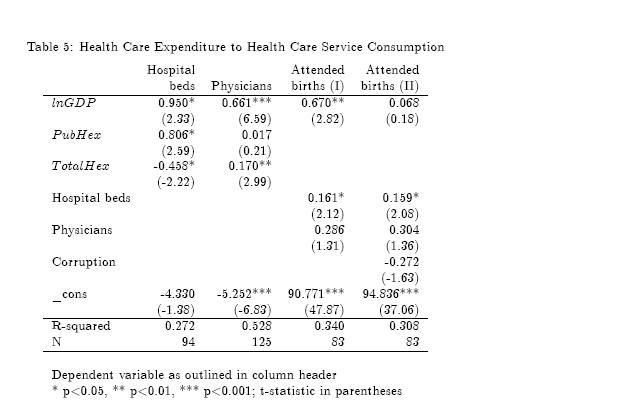Robert Waldmann | November 25, 2008 8:33 am
Tilman Tacke and Robert Waldmann
A health care system is efficient when an increase in spending results in significant improvements in the health of a population. We test the relative efficiency of public and private health care spending in reducing infant and child mortality using cross-national data for 163 countries. There are two remarkable findings: First, an increase in public funds is both, significantly correlated with a lower mortality and significantly more efficient in reducing mortality than private health care expenditure. Second, private health care expenditure is in all estimations associated with higher, not lower, mortality, although this association is often not statistically significant. The results suggest that, holding total health care expenditure constant, a potential decrease in total infant mortality in the 163 countries from 6.9 million deaths (2002) to 4.2-5.3 million deaths for completely publicly financed health care systems, but an increase to 9.0-10.0 million deaths for completely privately financed health care. We can explain some of the gap by geographies and socioeconomic factors such as HIV prevalence, sanitation standards, corruption, and income distribution. However, the estimated difference in the efficiency of public and private health care is statistically significant in all regressions.
Tables and figure after the jump




Table 4 reports how the coefficients of interest change when another variable is
added. All regressions summarized very very briefly in table 4 are regression 3 in table 1 with one other variable added.









Where did you get these statistics from?